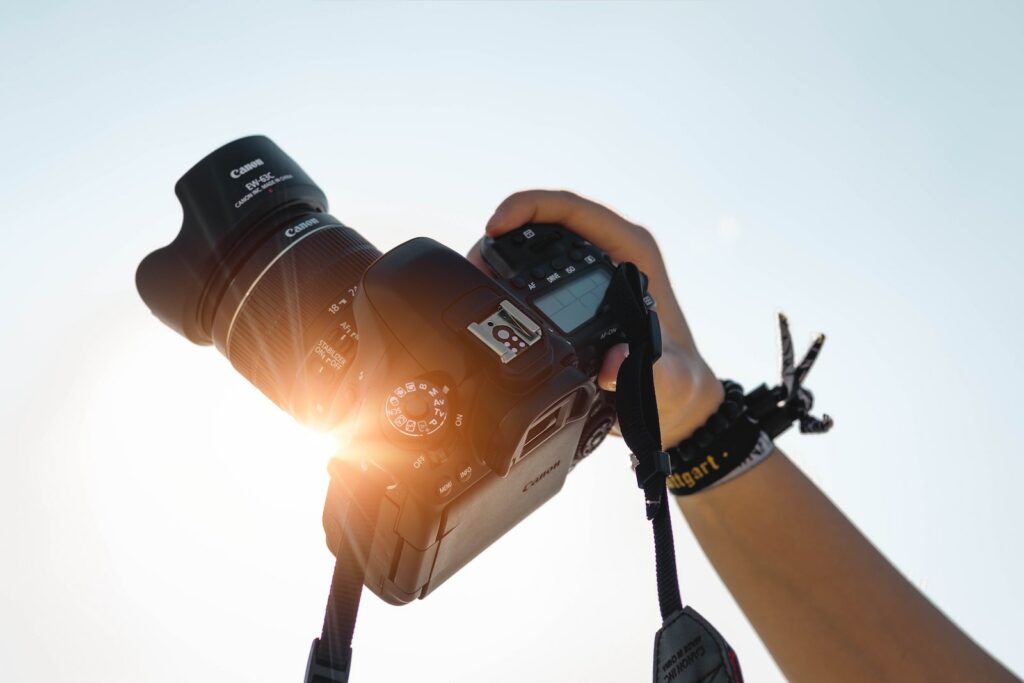
Photography enthusiasts looking for breathtaking locations to capture the beauty of the Coastal Bend can find a plethora of options. From the pristine beaches to the wildlife-rich parks, the Coastal Bend is a photographer’s paradise. Whether you’re an amateur or a professional photographer, you’ll find plenty of spots to capture stunning shots.
One of the most popular locations for capturing Instagram-worthy photos is the Rockport Beach. As one of only four Blue Wave Beaches along the Texas Gulf Coast, this spot is kept in pristine condition, and the dried palm umbrella structures make for fun posing material. Another must-visit spot is the Goose Island State Park, where you can capture the beauty of nature in its purest form. The Big Tree in the park is a popular spot for family portraits and nature photography.
Understanding the Basics of Photography
Photography is an art form that allows us to capture the beauty of the world around us. Whether you’re a beginner or an experienced photographer, understanding the basics of photography is essential for capturing stunning images. In this section, we’ll cover some of the fundamental concepts of photography, including exposure, composition, and lighting.
Exposure
Exposure is the amount of light that enters the camera sensor when you take a photo. A well-exposed photo has a balance of light and shadow, and the subject is clear and visible. To achieve the right exposure, you need to adjust three settings on your camera: aperture, shutter speed, and ISO. These settings work together to control the amount of light that enters the camera.
Composition
Composition is the arrangement of elements in a photo. A well-composed photo is visually appealing and draws the viewer’s eye to the subject. There are many composition techniques you can use to create a compelling photo, such as the rule of thirds, leading lines, and symmetry. Experiment with different techniques to find what works best for your subject.
Lighting
Lighting is one of the most important factors in photography. The quality and direction of light can dramatically affect the mood and atmosphere of a photo. Understanding how to work with different types of light, such as natural light and artificial light, is essential for capturing stunning photos. In low light situations, you may need to use techniques such as HDR or long exposures to capture the full range of light in a scene.
Camera Gear
While having the latest and greatest camera gear can be helpful, it’s not always necessary. A good photographer can create stunning images with any camera, whether it’s a smartphone or a professional-grade DSLR. However, having the right gear for the job can make a significant difference in the quality of your photos. Consider investing in a tripod, filters, and lenses to enhance your photography skills.
In summary, understanding the basics of photography is essential for capturing stunning images. By mastering exposure, composition, lighting, and camera gear, you can create beautiful photos that capture the beauty of the Coastal Bend.
Essential Gear for Coastal Photography
Coastal photography can be challenging due to the constantly changing weather conditions and the harsh environment. Therefore, having the right gear is essential to capture stunning photos of the Coastal Bend. Here are some of the essential gear items for coastal photography:
Tripod
A sturdy tripod is a must-have for coastal photography. It will help you stabilize your camera and prevent camera shake, resulting in sharp and clear images. A tripod will also allow you to shoot at slower shutter speeds without worrying about blurry images. Look for a tripod that is lightweight, compact, and easy to carry around.
Filters
Filters are another essential item for coastal photography. A polarizing filter can help reduce glare and reflections, making the colors in your photos more vibrant. A neutral density filter can help you achieve longer exposure times, resulting in beautiful motion blur effects for water and clouds. Graduated neutral density filters can also help balance the exposure between the bright sky and the darker foreground.
Smartphone
Don’t underestimate the power of your smartphone for coastal photography. Many smartphones these days have excellent cameras that can capture stunning images. Plus, they are lightweight and easy to carry around. You can also use various photography apps to enhance your photos and experiment with different settings.
Phone
If you prefer using a traditional camera, make sure to protect it from the salty sea air and water. A waterproof camera case or a plastic bag can come in handy. You can also use a camera strap to prevent it from falling into the water. Don’t forget to bring extra batteries and memory cards as well.
In conclusion, having the right gear is crucial for capturing the beauty of the Coastal Bend. A tripod, filters, smartphone, and camera protection are some of the essential items for coastal photography. With the right gear, you can take stunning photos that will make you fall in love with the Coastal Bend all over again.
Best Time for Coastal Photography
Capturing the beauty of the Coastal Bend requires the right timing. Here are some tips on when to take your coastal photos:
- Sunrise and Sunset: The golden hours of sunrise and sunset are the best times to capture the beauty of the Coastal Bend. During these times, the light is soft and warm, which enhances the colors and textures of the coastal landscapes. The sun is also at a lower angle, creating long shadows and adding depth to your photos.
- Golden Hour: The golden hour is the period of time shortly after sunrise and before sunset when the light is soft, warm, and golden. This is the perfect time to capture the beauty of the Coastal Bend. The golden hour is also a great time to experiment with silhouettes, backlighting, and lens flares.
- Light Pollution: Light pollution can be a problem when taking coastal photos at night. It can wash out the stars, making it difficult to capture the beauty of the Milky Way. To avoid light pollution, choose a location that is far away from city lights. You can also use a light pollution filter to reduce the amount of light pollution in your photos.
- Milky Way: The Milky Way is a beautiful subject to capture in your coastal photos. To capture the Milky Way, you need to choose a location that is far away from city lights and wait for a clear night with a new moon. Use a wide-angle lens and a tripod to capture the stars and the Milky Way.
In conclusion, the best time for coastal photography is during the golden hours of sunrise and sunset. The light is soft and warm, enhancing the colors and textures of the coastal landscapes. Avoid light pollution when taking coastal photos at night, and choose a location that is far away from city lights to capture the beauty of the Milky Way.
Capturing the Coastal Landscapes
Coastal landscapes offer a wide range of photography opportunities, from the serene beauty of the ocean to the ruggedness of cliffs and rocks. Whether you’re a professional photographer or just starting out, the Coastal Bend has plenty of stunning spots to explore.
When photographing coastal landscapes, it’s important to pay attention to the foreground, middle ground, and background. The foreground can add depth and interest to your photos, while the middle ground can provide a sense of scale. The background, such as the horizon or trees, can help frame your shot.
One of the most important aspects of coastal landscape photography is lighting. The best time to shoot is during the golden hour, which is the hour after sunrise or the hour before sunset. During this time, the light is soft and warm, which can create stunning shadows and textures.
Another important aspect is the use of filters. A polarizing filter can help reduce glare and enhance colors, while a neutral density filter can help you achieve longer exposures for creating a sense of motion in the water or clouds.
When capturing the beauty of the Coastal Bend, there are many subjects to focus on, including the beach, ocean, rocks, and trees. You can also explore sea stacks and sea caves, which can create dramatic and unique compositions.
In conclusion, capturing the beauty of the Coastal Bend requires attention to detail and a keen eye for composition. By paying attention to the foreground, middle ground, and background, as well as lighting and filters, you can create stunning coastal landscape photos that capture the essence of nature’s beauty.
Unique Features of the Coastal Bend
The Coastal Bend is a picturesque stretch of coastline that is home to a diverse range of landscapes, wildlife, and natural wonders. Here are some of the unique features that make this region a photographer’s paradise:
Sandy Beaches
The Coastal Bend boasts miles of pristine sandy beaches that are perfect for capturing stunning sunsets, wildlife, and seascapes. From the bustling beaches of Corpus Christi to the secluded coves of Port Aransas, there are plenty of opportunities to capture the beauty of the coast.
Wildlife
The Coastal Bend is home to a wide variety of wildlife, including dolphins, sea turtles, and a myriad of bird species. The Aransas National Wildlife Refuge is a must-visit spot for bird lovers, as it is home to the endangered whooping crane.
Natural Wonders
The Coastal Bend is also home to several natural wonders that are worth capturing on camera. The Padre Island National Seashore is the longest undeveloped barrier island in the world and is home to a diverse range of ecosystems. The Big Tree at Goose Island State Park is another natural wonder that is worth a visit. This ancient live oak tree is over 1,000 years old and is one of the largest live oak trees in the United States.
Historic Landmarks
In addition to its natural wonders, the Coastal Bend is also home to several historic landmarks that are worth capturing on camera. The USS Lexington Museum on the Bay is a retired aircraft carrier that is now a museum and is a popular spot for photographers. The Texas State Aquarium is another popular attraction that is home to a wide variety of marine life.
Overall, the Coastal Bend is a region that is rich in natural beauty and history, making it a paradise for photographers. Whether you’re capturing the sunset over the ocean or the wildlife in the Aransas National Wildlife Refuge, there are plenty of opportunities to capture stunning images that showcase the beauty of this region.
Planning Your Photography Trip
Capturing the beauty of the Coastal Bend is a bucket list item for many photographers. Before setting out on your photography trip, it’s important to plan ahead to ensure you make the most of your time and get the shots you want.
First, decide on the order in which you want to visit your photography spots. You may want to start early in the morning to capture the sunrise, or plan to stay until sunset for the golden hour. Consider the time of day and lighting conditions when planning your route.
Next, research the best boat ramps and access points to get to your photography spots. Some locations may require a boat or kayak to access, while others can be reached by car or on foot. Make sure you have the necessary equipment and permits for your chosen mode of transportation.
When planning your photoshoot, think about the types of shots you want to capture. Will you be focusing on landscapes, wildlife, or architecture? Consider the composition and framing of your shots, as well as any props or accessories you may need.
Finally, be prepared for the weather and any potential hazards. Bring appropriate clothing and gear for the conditions, and be aware of any safety concerns such as strong currents or wildlife.
By planning ahead and being prepared, you can ensure a successful and enjoyable photography trip to the Coastal Bend.



